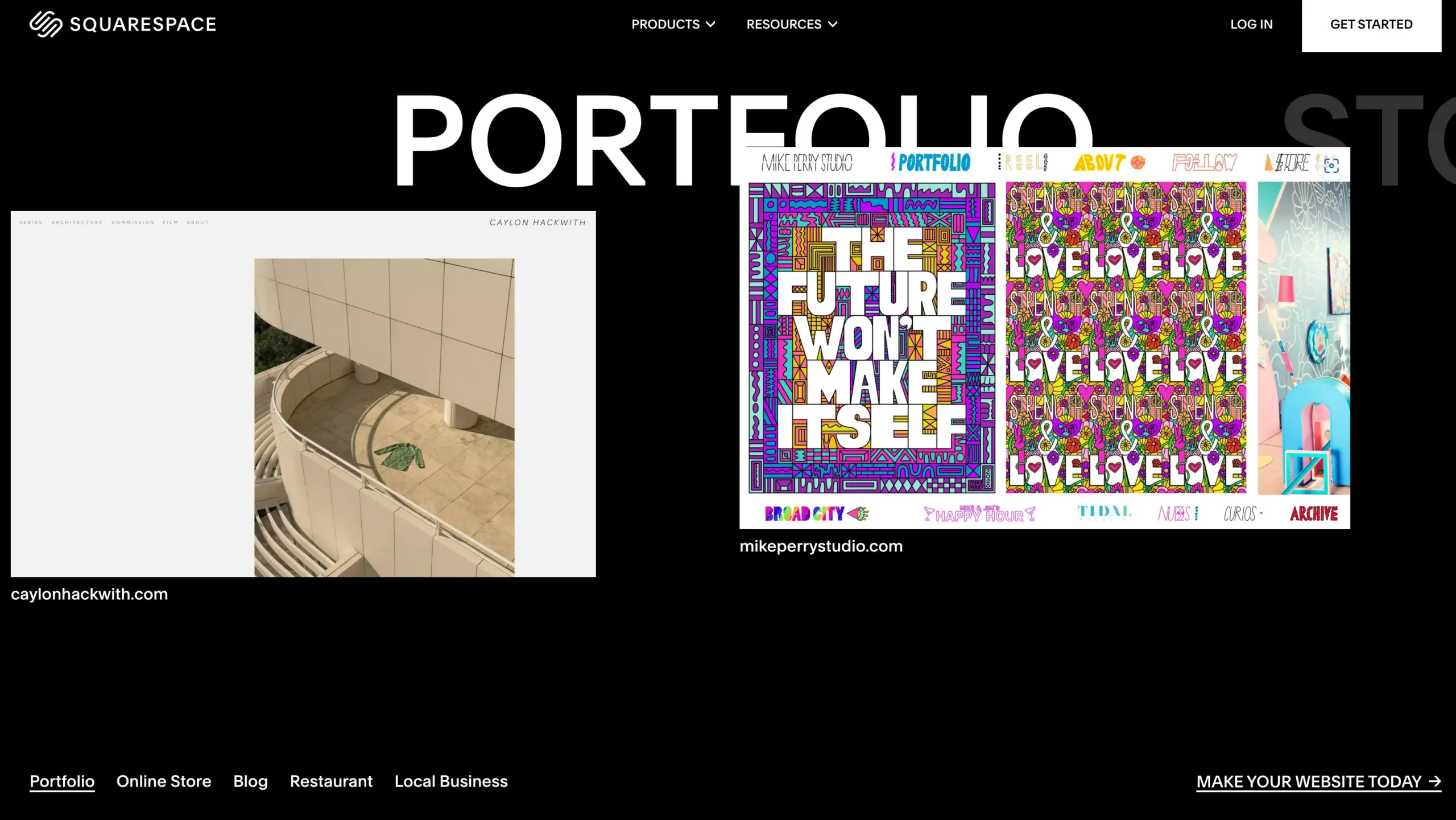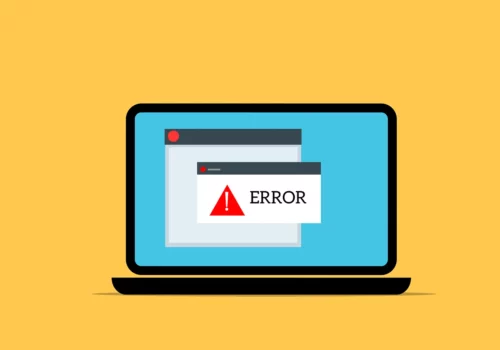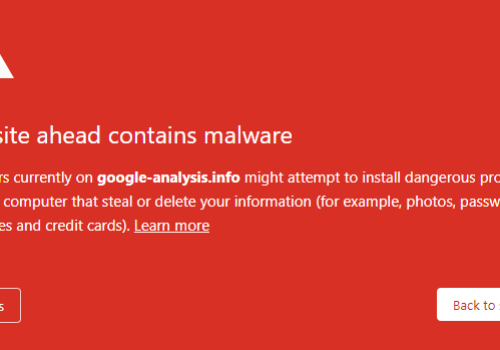When it comes to building an online presence, two platforms often come up: Squarespace and Shopify. Both have their strengths, but depending on your needs, one might be more suitable than the other.
Let’s delve into a detailed comparison to help you make an informed decision.
Squarespace Overview
Squarespace is primarily known for its beautiful design templates and ease of use. It’s a website builder that lets users create visually stunning websites without needing any coding knowledge.
It’s a great choice for small businesses, bloggers, artists, and anyone looking to create a site with strong design elements in mind.
- Best for: Individuals, small businesses, portfolios, creatives, and those seeking a visually appealing website with simple e-commerce options.
- Key Features:
- Drag-and-drop website builder
- Beautiful, customizable templates
- Built-in blogging tools
- Built-in e-commerce (for physical and digital products)
- Mobile responsive design
- 24/7 customer support
- Integrated analytics and SEO tools
- Email marketing integration
Squarespace is a perfect choice for users who prioritize design and content-driven websites and need basic e-commerce capabilities to sell a small number of products online.
Shopify Overview
Shopify, on the other hand, is a dedicated e-commerce platform built specifically for online stores. It’s one of the best platforms for launching and growing an e-commerce business, especially if you plan to scale.
Shopify is tailored to businesses that need advanced e-commerce features, high customization, and integration with various sales channels like Amazon, Facebook, and Instagram.
- Best for: E-commerce businesses of all sizes, particularly those focused on selling products and scaling operations.
- Key Features:
- Advanced e-commerce tools (inventory management, payment gateways, etc.)
- Multi-channel selling (sell on Facebook, Amazon, eBay, etc.)
- Wide selection of apps and integrations
- Customizable themes and third-party apps
- Strong reporting and analytics tools
- 24/7 customer support with live chat and phone options
- SSL certificates for secure transactions
- Large community and resources for e-commerce-focused entrepreneurs
Shopify is designed for users who want to build and manage a robust online store with comprehensive e-commerce functionality. It’s especially suited for those looking to scale and optimize their business across multiple platforms.
1. Ease of Use
Squarespace: Known for its user-friendly drag-and-drop interface, Squarespace allows users to create visually appealing websites without any coding knowledge. The platform offers a seamless experience, making it ideal for beginners and those who prioritize design.
Shopify: While Shopify is also user-friendly, it caters more to e-commerce businesses. The setup process is straightforward, but users might need some time to familiarize themselves with the platform’s extensive features.
2. Design and Templates
Squarespace: Offers a wide range of professionally designed templates that are mobile-responsive. These templates are highly customizable, allowing users to create unique websites that align with their brand.
Shopify: Provides a variety of themes, both free and paid. While they are functional, they might not offer the same level of design flexibility as Squarespace templates.
3. E-Commerce Capabilities
Squarespace: Ideal for small to medium-sized businesses, Squarespace offers essential e-commerce features like product management, inventory tracking, and secure checkout. However, it might lack some advanced features found in dedicated e-commerce platforms.
Shopify: A powerhouse in e-commerce, Shopify provides a comprehensive suite of tools including advanced inventory management, multi-channel selling, and extensive app integrations. It’s tailored for businesses looking to scale and expand their online stores.
4. Customer Support
Squarespace: Provides 24/7 customer support through email and live chat. The support team is known for being responsive and helpful, assisting users with various issues promptly.
Shopify: Offers 24/7 support via phone, email, and live chat. Given its vast user base, the support team is well-equipped to handle a wide range of queries and issues.
5. SEO and Marketing Tools
Squarespace: Includes built-in SEO tools to help your website rank on search engines. Additionally, it offers email marketing features, social media integrations, and analytics to track website performance.
Shopify: Provides robust SEO features and integrates seamlessly with various marketing tools. However, some advanced marketing functionalities might require third-party apps, which can incur additional costs.
6. Security
Squarespace: Offers SSL certificates for secure transactions and ensures that your website is protected against potential threats.
Shopify: Provides SSL certificates and is PCI DSS compliant, ensuring that customer data is handled securely.
7. Scalability
Squarespace: Best suited for small to medium-sized businesses. As your business grows, you might encounter limitations in features and functionalities.
Shopify: Designed to scale with your business. Whether you’re a startup or an enterprise-level company, Shopify offers the tools and resources to support your growth.
Pricing Comparison
Here’s a detailed pricing comparison table between Squarespace and Shopify, followed by reasons why Squarespace might be the better choice when it comes to pricing:
| Plan | Squarespace | Shopify |
| Personal Plan | $16/month | N/A |
| Business Plan | $26/month | N/A |
| Basic E-commerce Plan | $30/month | $29/month |
| Advanced E-commerce Plan | $46/month | $79/month |
| Shopify Plan | N/A | $29/month |
| Shopify Advanced Plan | N/A | $299/month |
| Additional Fees | No transaction fees (except for the Basic plan) | Transaction fees unless using Shopify Payments |
Why Squarespace Wins in Pricing:
1. More Affordable Starting Point:
Squarespace’s Personal Plan begins at just $16/month, making it a much more affordable option for personal websites, blogs, or small businesses compared to Shopify’s lowest plan, which starts at $29/month.
If you just need a simple site without extensive e-commerce functionality, Squarespace’s Personal Plan is a clear budget winner.
2. Simplified Pricing:
Squarespace has fewer pricing tiers and straightforward pricing, with all key features bundled into the plans. You know exactly what you’re paying for, without the need to worry about extra apps or hidden fees.
Shopify’s pricing can escalate quickly, particularly if you need advanced features, third-party apps, or add-ons. For instance, its Advanced Shopify plan is priced at $299/month, which could be overkill for smaller businesses.
3. No Transaction Fees:
Squarespace doesn’t charge transaction fees on any of its plans (except for the Basic Plan, which is still quite reasonable). This can save a lot of money if you’re operating an online store, as Shopify charges transaction fees unless you use Shopify Payments.
4. E-commerce-Friendly at Lower Tiers:
Squarespace’s Basic E-commerce Plan starts at $30/month, which includes features like inventory management, product pages, and a secure checkout—features you would generally have to upgrade to a higher Shopify tier to access.
5. Lower Overall Cost for Small Businesses:
For small businesses or individual creators looking for an all-in-one solution (website, e-commerce, and marketing), Squarespace offers a competitive advantage in terms of pricing and simplicity.
In summary, if you’re looking for affordability and simplicity in pricing, Squarespace is the winner. It provides robust features at a lower price point, without the complexities of additional costs and fees that Shopify often entails.
Conclusion
Both Squarespace and Shopify offer unique features tailored to different needs. If you’re a creative professional or a small business owner looking for an aesthetically pleasing website with essential e-commerce functionalities, Squarespace is a great choice.
On the other hand, if you’re aiming to build a large-scale online store with advanced e-commerce features, Shopify stands out as the preferred platform.
Ultimately, the best platform depends on your specific requirements, budget, and long-term goals. Consider what features are most important to you and choose the platform that aligns best with your vision.
FAQ’s
Which is better for beginners?
Squarespace is easier for beginners with its drag-and-drop interface and design focus.
Which is cheaper?
Squarespace is generally more affordable with its lower starting plans.
Which is better for e-commerce?
Shopify is specifically built for e-commerce, offering advanced tools for online stores.
Can I sell products on both platforms?
Yes, both platforms allow selling products, but Shopify is more robust for large-scale e-commerce.
Does Squarespace offer transaction fees?
Squarespace charges no transaction fees on most plans, unlike Shopify.
Which platform is better for design?
Squarespace excels in beautiful, customizable design templates.







